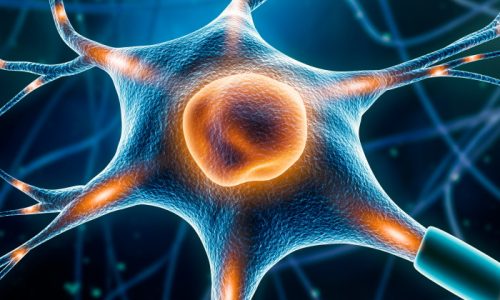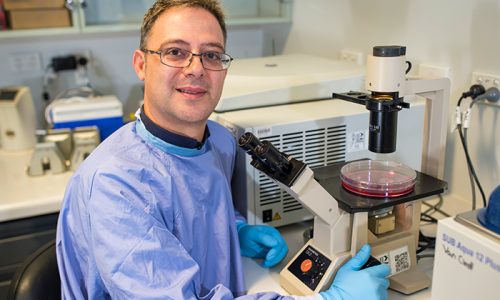- Whilst Australians have access to a variety of disease modifying therapies that target the immune system, there is still a need for effective treatments that combat damage to nerve fibres and myelin.
- Dr Steven Petratos and his team, supported in part by MS Australia and the Rotary Club of Moorabbin, have investigated the role of a protein in nerve fibre damage.
- Using blood immune cells, the team were able to deliver a therapeutic protein to pre-clinical models of MS, which exhibited complete recovery from MS symptoms, and potential regeneration of nerve fibres and remyelination.
The need for treatments for progressive MS
Treatment for MS has made significant progress in the last 30 years. In 1996, the first disease-modifying therapy (DMT) was listed on the Pharmaceutical Benefits Scheme (PBS). Today, there are now 14 listed on the PBS.
Although Australians have access to many treatment options, these target the immune system to slow down disease progression and are primarily aimed at people living with relapsing-remitting MS.
Progressive MS is thought to result from ongoing damage to nerve fibres rather than the immune system attacking the myelin sheath, the protective, fatty layer around nerve fibres. It is believed the destruction of nerve fibres leads to permanent and increasing disability in progressive MS.
Unfortunately, effective treatment options for progressive MS remains an unmet need, but researchers are actively working to address this gap.
What did the researchers do?
Dr Steven Petratos, from Monash University, and his team have been studying the molecular cascade involved in nerve fibre damage in MS.
One protein that is involved in mediating this molecular cascade is Nogo Receptor 1 (NgR1). Specifically, this protein binds to factors that inhibit the regeneration of nerve fibres and causes further degeneration of nerve fibres.
Previous research has shown that removing NgR1 in laboratory models of MS preserves the nerve fibres despite active inflammation. Additional studies have demonstrated that using a therapeutic protein to block the binding of factors that inhibit nerve fibre regeneration decreases symptoms and enhances nerve fibre regeneration in laboratory models of spinal cord injury and glaucoma.
Published in Brain Communications and supported in part by MS Australia and the Rotary Club of Moorabbin, Dr Petratos and his team have investigated whether delivery of the same therapeutic protein in laboratory models of MS would contribute to the repair of myelin and nerve fibres following damage.
To deliver this protein, the researchers had to consider how to effectively reach areas of damage in the brain and spinal cord. This is because the blood-brain barrier, a layer of cells that protects the brain and spinal cord, tightly regulates and restricts molecules from entering.
In people living with MS and laboratory models of MS, immune cells can infiltrate within lesions (sites of damage) in the brain and spinal cord. The researchers took advantage of this and used immune cells from the blood to deliver the therapeutic protein specifically to lesions in the brain and spinal cord.
What did the researchers find?
Dr Petratos and his team were able to demonstrate successful delivery of the therapeutic protein via blood immune cells to areas of damage in the brain and spinal cord during the peak of symptoms in laboratory models of MS. In fact, these laboratory models exhibited complete recovery from MS symptoms.
The laboratory models of MS that received the therapeutic protein also had higher levels of a particular subset of immune cell involved in removing myelin debris. Myelin debris occurs when myelin is damaged, and its effective removal is necessary to promote the regeneration of nerve fibres and remyelination.
Finally, using microscopy, the researchers found that clinically recovered laboratory models experienced decreased nerve fibre degeneration and higher levels of small nerve fibres suggesting nerve fibre regeneration. They also observed a decrease in demyelination and an increase in remyelinated nerve fibres.
What does it mean?
While further research is required, there is hope this approach could be applied to people living with MS to help regenerate nerve fibres and repair myelin in the brain and spinal cord.
This could pave the way for more treatments for progressive MS, addressing one of the largest unmet needs of people living with MS.
International Progressive MS Alliance
MS Australia is proud to be a managing member of the International Progressive MS Alliance.
The Alliance has brought together MS organisations, researchers and people living with MS from around the world to address the unmet needs of people living with progressive MS.






